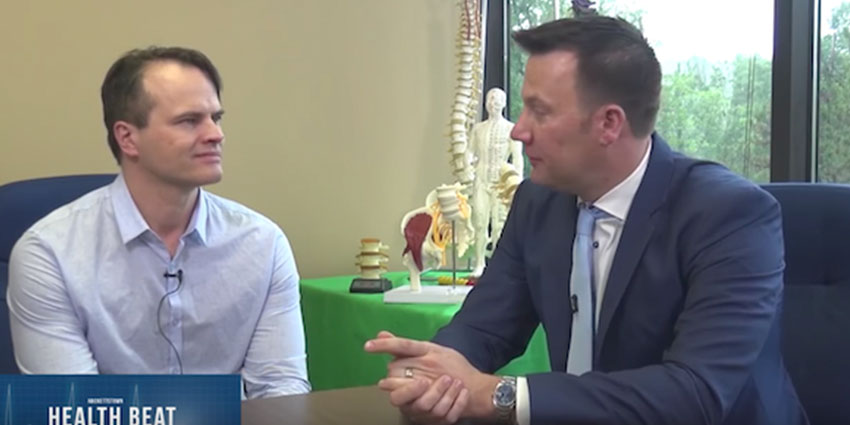What is Facet Arthritis?: Everything You Need to Know
What is facet arthritis? It is a disabling disease affecting the quality of people lives, yet it is relatively unknown.
Its symptoms include sporadic, sometimes severe and unpredictable pain in the neck or back.
It also causes a decrease in your mobility due to traveling pain anywhere from the neck to the upper leg.
Unique Facet Arthritis Indicators
It is easy to think arthritis will never affect your life, much less a type of arthritis which is so unique most people have never heard of it.
What is facet arthritis and the statistical impact on the population?
Facet arthritis afflicts the geriatric populations more than any other age group. Women are twice as likely to get it than men.
Many people will begin to suffer from sporadic and unpredictable pain. This pain can radiate from the neck down to the upper legs.
A facet arthritis diagnosis is prevalent in obese people and the condition plays a large factor in the people who have the disease.
Any accident, physical trauma or injury can trigger this type of arthritis or cause it to re-occur with more pain intensity.
A couple of other factors that can be indicators include malnutrition and a lack of physical exercise and activities.
Any joint can develop arthritis. However, when arthritis develops in the facet joint, this is facet arthropathy also known as facet arthritis.
There is not one symptom of facet arthropathy which would immediately make you run to your doctor. At least not in the beginning.
The progressive symptoms of facet arthritis are something else entirely. Unfortunately, there is no cure for facet arthritis cannot because once the facet joints are damaged they cannot heal.
Facet Arthritis To-Do List
The first thing one must do is get testing done to diagnose facet joint arthritis. A medical imaging test to locate where the disease is within the body is very helpful in diagnosing the condition.
Some of the imaging tests which are helpful to determine if you suffer from arthropathy include, but are not limited to:
- MRI
- X-Ray
- CT Scan
The facet injection is also something which helps diagnose this condition. This test is sometimes called a medial branch block.
The medial branch block provides anesthetic which blocks the nerves when it senses facet joint pain. It is when you tell your doctor you have begun to feel better and are not having the same symptoms, the physician makes the official diagnosis of facet arthritis.
The Treatments for Facet Arthritis
There is no cure for facet arthritis, but that doesn’t mean you need to suffer or not seek treatment. There are many treatment options that will help manage and reduce your pain.
The treatments options range from prescription medication to physical therapy. But we have listed some specific treatment options below:
- Anti-inflammatory medication helps the pain because it reduces inflammation at the affected joint.
- Apply a heating pad or cooling pad on the inflamed area can help manage the pain.
- Physical therapy is a great option to help you keep moving the inflamed facet arthritic area.
- Radiofrequency ablation is also known as facet thermal ablation helps nerve blocking in the affected area.
- Acupuncture has some success offering pain relief associated with facet joint arthritis.
Find the treatment option which works best for you. Don’t quit if the first one doesn’t work right away. It takes persistence with the end result being reducing the pain.
Surgery and Other Treatment Options
Surgery is a last resort for facet arthropathy, because of the risk to the spine. Lumbar fusion surgery is performed only if the pain is intolerable.
It is best if you try every medical and non-medical treatment before going down the surgical path of treatment.
But is a logical choice if the quality of your life diminishes due to constant and severe arthritic pain. We understand this type of decision is not made lightly.
It takes family and physician consensus, consultations, and agreement for this final resort to be an option.
There are other treatment options and some of them are unique. An important thing to remember is within the medical field treatment options grow every day.
A couple of unique treatment options have great success in reducing facet arthritis inflammation and pain. They are in the list below:
- Joint corticosteroid injections shot into the affected joint reduces arthritic inflammation.
- Minimally invasive lumbar fusion – a surgery which fuses bones of the spine together so there is no motion between them.
If the recommendation is surgery, minimally invasive surgeries are the best. This means the use of percutaneous techniques in surgeries because they have minimal impact.
They are performed with small incisions so the removal of bone is less. There is also less blood loss and less recovery time need after surgery.
What’s more, there are usually excellent surgical results due to the use of specialized spinal tools and instrumentation.
You Do Not Walk This Road Alone
Many people suffer from facet arthritis. 1 in 5 people suffers from various forms of arthritis.
Due to the high number of arthritis sufferers, there are peer-to-peer support groups available. There are also support groups run by the Arthritis Foundation and other non-profit agencies.
The support groups offer emotional support, activities aimed at helping those with any form of arthritis, and some offer financial assistance.
They are there for you so please reach out when you need those who understand the disease best.
What is Your Next Best Step?
We offer some of the most advanced medical and non-medical treatment options in facet arthritis.
Our commitment is to easing your pain and giving you back the quality of life you deserve. So what is facet arthritis? It is a condition our practice can help you with today.
We have the surgeons, the experience, and the best medical and non-medical treatment options to help you today.
Don’t wait to contact us until the pain has taken joy and life from your day-to-day existence. We want to help give you a future which is carefree and open so you can experience life once again.


